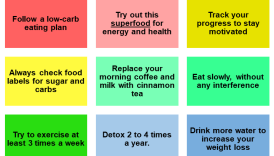The Family’s Guide to Sustainable Healthy Living Habits

Introduction to Sustainable Healthy Living Habits
Understanding the Importance of Sustainable Living
In today’s fast-paced world, the principles of sustainable living have never been more critical. Families are becoming increasingly aware of their impact on the environment and are seeking ways to create healthier, more environmentally friendly lifestyles. Sustainable living emphasizes reducing waste, conserving resources, and making choices that benefit both personal health and the planet. Just imagine a dinner table filled with fresh vegetables from a local farm, or a family bike ride to school instead of taking the car. These small changes can have a ripple effect, fostering a loving culture of sustainability within the family unit.
- The Family’s Guide to Sustainable Healthy Living Habits
- Introduction to Sustainable Healthy Living Habits
- Understanding the Importance of Sustainable Living
- Benefits of Adopting Healthy Habits as a Family
- Mindful Eating Practices for the Whole Family
- Eating Seasonally and Locally
- Meal Planning and Preparation Tips
- Eco-Friendly Home Environment
- Reducing Household Waste
- Creating a Chemical-Free Living Space
- Encouraging Physical Activity for Everyone
- Family-Friendly Exercises and Activities
- Making Fitness a Fun Priority
- Prioritizing Mental and Emotional Well-being
- Stress Management Techniques
- Promoting Positive Family Relationships
- Sustainable Shopping and Consumption Habits
- Tips for Sustainable Shopping
- Reducing Single-Use Plastics
- Connecting with Nature as a Family
- Benefits of Spending Time Outdoors
- Eco-Friendly Outdoor Activities for Families
Benefits of Adopting Healthy Habits as a Family
Making a conscious effort to adopt healthy habits as a family not only benefits individual health but also strengthens family bonds. Here are some key benefits:
- Improved Well-Being: Engaging in active lifestyles and healthy eating leads to better physical health.
- Enhanced Relationships: Shared activities, like cooking or exercising together, create memorable family moments.
- Environmental Awareness: Teaching children about sustainable choices instills a sense of responsibility toward the environment.
- Establishing Routines: Consistent healthy habits foster discipline and create beneficial routines for all family members.
By prioritizing sustainable healthy living habits, families can enjoy not only a more vibrant and fulfilling life but also contribute positively to the world around them.
Mindful Eating Practices for the Whole Family
Eating Seasonally and Locally
Transitioning from the benefits of sustainable living to mindful eating practices can be both exciting and rewarding. One of the most impactful changes families can make is to focus on eating seasonally and locally. This approach not only supports local farmers but also ensures that meals are fresher and more nutritious. For instance, visiting a local farmers’ market can become a delightful weekend tradition. Families can enjoy seasonal fruits and vegetables, such as vibrant tomatoes in summer or hearty pumpkins in fall. Choosing to eat what’s in season often leads to:
- Better Flavor: Locally grown produce is typically harvested at its peak ripeness.
- Reduced Environmental Impact: Shorter transportation distances mean a lower carbon footprint.
- Supporting the Community: Purchasing from local farmers strengthens local economies.
Meal Planning and Preparation Tips
Meal planning is another effective strategy for fostering mindful eating. It can save time, money, and reduce food waste. Here are some practical tips for families to consider:
- Create a Weekly Menu: Sit down together to plan meals around seasonal produce. Involve children in the decision-making process to pique their interest.
- Batch Preparation: Cook larger portions to enjoy leftovers during busy days. This also encourages kids to explore new flavors.
- Involve Everyone in Cooking: Assign age-appropriate tasks to children, turning meal preparation into a fun, family bonding experience.
By focusing on seasonal ingredients and strategic meal planning, families can significantly boost their health while practicing mindful eating together.
Eco-Friendly Home Environment
Reducing Household Waste
Building on the theme of mindful eating practices, creating an eco-friendly home environment is essential for nurturing sustainable living habits. One of the most effective ways families can contribute to a healthier planet is by reducing household waste. This can be tackled in several simple yet impactful ways. For instance, engaging children in recycling and composting can foster a sense of responsibility. A few practical steps include:
- Implementing a Recycling System: Designate specific bins for paper, plastics, and metals. Make it a family activity to sort through trash before it goes out.
- Embracing Reusable Options: Switch from single-use products to reusable alternatives like cloth bags, water bottles, and containers.
- Planning Meals to Minimize Leftovers: Use the meal planning strategies discussed earlier to ensure less food waste occurs.
Creating a Chemical-Free Living Space
Another essential aspect of an eco-friendly home is ensuring it is free from harmful chemicals. Families can create a safe and healthy environment by choosing natural cleaning products and materials. Here are some effective ways to approach this:
- Opting for Non-Toxic Cleaning Supplies: Invest in environmentally friendly products or make your own using simple ingredients like vinegar and baking soda.
- Selecting Natural Materials: When choosing furniture or decor, look for items made from sustainable and non-toxic materials.
- Air Quality Improvements: Incorporate houseplants to enhance indoor air quality naturally. Plants like spider plants and peace lilies are great choices.
By focusing on reducing waste and eliminating harmful chemicals, families can transform their homes into healthy, eco-friendly spaces that promote overall well-being.
Encouraging Physical Activity for Everyone
Family-Friendly Exercises and Activities
As families strive to create an eco-friendly home environment, it’s equally essential to prioritize physical activity. Encouraging movement isn’t just beneficial for health; it can also be incredibly fun! Family-friendly exercises can be simple yet effective, fostering teamwork and bonding among all ages. For example, opting for activities like:
- Biking Together: Explore local parks or trails as a family, making it a weekend adventure. This not only promotes exercise but also nurtures a love for nature.
- Family Dance Party: Put on some favorite tunes and have a dance-off in the living room. It’s a joyful way to get everyone moving.
- Outdoor Sports: Organize a family soccer game or set up a volleyball net in the backyard for friendly competitions.
Making Fitness a Fun Priority
To ensure fitness remains a fun priority, families should focus on keeping activities enjoyable rather than tedious. Here are some tips to make exercise a regular part of family life:
- Mix It Up: Rotate different activities weekly to keep things fresh—hiking one weekend, swimming the next, and a nature walk another.
- Set Goals Together: Create achievable fitness goals, like collectively walking a certain distance each week, and celebrate when the family hits those milestones.
- Use Technology: Consider fitness apps or online challenges to track progress and encourage friendly competition, adding an exciting twist to routine workouts.
By incorporating engaging exercises into their daily lives, families can foster a healthy lifestyle and make fitness a delightful and shared experience.
Prioritizing Mental and Emotional Well-being
Stress Management Techniques
Continuing the journey toward a healthier family dynamic, prioritizing mental and emotional well-being is just as crucial as physical health. With life’s demands and challenges, especially in our fast-paced world, implementing effective stress management techniques can benefit everyone in the family. For example, families can explore mindfulness exercises like:
- Deep Breathing: Encourage everyone to take a few moments for deep breathing exercises, perhaps while seated around the dinner table. Breathing deeply can help alleviate stress and promote calm.
- Daily Journaling: Each family member can keep a journal to express thoughts and feelings. This practice not only fosters self-reflection but also opens the door for discussions about emotions.
- Mindful Walks: Take leisurely strolls together after dinner, focusing on the environment, sounds, and feelings. This helps clear the mind while promoting physical activity.
Promoting Positive Family Relationships
A cornerstone of mental well-being is the quality of family relationships. Fostering open communication and connection is essential for emotional support. Here’s how families can promote positive relationships:
- Regular Family Meetings: Set aside time each week to discuss feelings, worries, or celebrations. This creates an environment of openness and trust.
- Quality Time Together: Establish dedicated time for family activities, whether it’s game night, cooking together, or outdoor adventures. These shared experiences strengthen bonds and create lasting memories.
- Expressing Appreciation: Encourage family members to express gratitude regularly, highlighting the positive aspects of one another. It can be as simple as a “thank you” or leaving little notes of love.
By prioritizing mental and emotional well-being, families can create a nurturing environment that supports each member’s experiences while strengthening overall family cohesion.
Sustainable Shopping and Consumption Habits
Tips for Sustainable Shopping
As families nurture their mental and emotional well-being, it’s also crucial to extend that care to how they shop and consume. Adopting sustainable shopping habits is a powerful way to contribute positively to the environment while also setting a good example for future generations. Begin by encouraging family discussions about thoughtful purchasing decisions. Here are some practical tips:
- Create a Shopping List: Before heading to the store, involve everyone in making a list based on needed essentials. This helps reduce impulse buys.
- Choose Quality Over Quantity: Select items that are durable and designed to last. This not only saves money in the long run but also minimizes waste.
- Shop Secondhand: Consider thrift shops or online resale platforms for clothing and home items. This turns shopping into an adventure and reduces the demand for new goods.
Reducing Single-Use Plastics
Another essential aspect of sustainable shopping is reducing the use of single-use plastics. Families can work together to make a significant difference in their consumption patterns. Here are some strategies to incorporate:
- Invest in Reusable Alternatives: Using reusable bags, containers, and straws reflects a commitment to cutting down on plastic waste.
- Say No to Plastic Wrap: Opt for beeswax wraps or glass containers for food storage, which are eco-friendly alternatives.
- Support Brands with Sustainable Practices: Choose companies that prioritize environmentally responsible packaging and materials, making it a family mission to research and promote these brands.
By adopting sustainable shopping and consumption habits, families not only contribute to a healthier planet but also instill lasting values in their children, promoting a collective effort toward sustainability.
Connecting with Nature as a Family
Benefits of Spending Time Outdoors
As families embrace sustainable shopping and consumption habits, connecting with nature is a wonderful way to enhance overall well-being. Spending time outdoors offers numerous benefits that go beyond just physical activity; it nourishes the mind and spirit as well. For example, when my family hikes through lush forests, we find that even the stresses of daily life fade away. Here are some remarkable benefits of spending time outdoors together:
- Improved Mental Health: Studies show that being in nature reduces anxiety and stress levels, promoting a sense of calm and well-being.
- Enhanced Creativity: Outdoor experiences stimulate creativity and encourage problem-solving, which children thrive on.
- Strong Family Bonds: Engaging in outdoor activities fosters communication and teamwork, ultimately strengthening family relationships.
Eco-Friendly Outdoor Activities for Families
Making outdoor time fun and eco-friendly can add even more value to those experiences. Here are some exciting activity ideas that families can enjoy while being kind to the planet:
- Nature Scavenger Hunts: Create a list of natural items to find, such as specific leaves, flowers, or rocks, making it an educational adventure.
- Community Clean-Up Days: Organize or participate in local efforts to clean parks or beaches. This not only connects families with nature but also teaches the importance of environmental stewardship.
- Gardening Together: Whether starting a vegetable patch or planting trees, gardening nurtures a connection to nature and enhances sustainability. It’s also a rewarding experience to see things grow!
By prioritizing time spent outdoors, families can promote health, well-being, and a deep appreciation for the environment, reinforcing the sustainable themes they’ve embraced in their home life.





